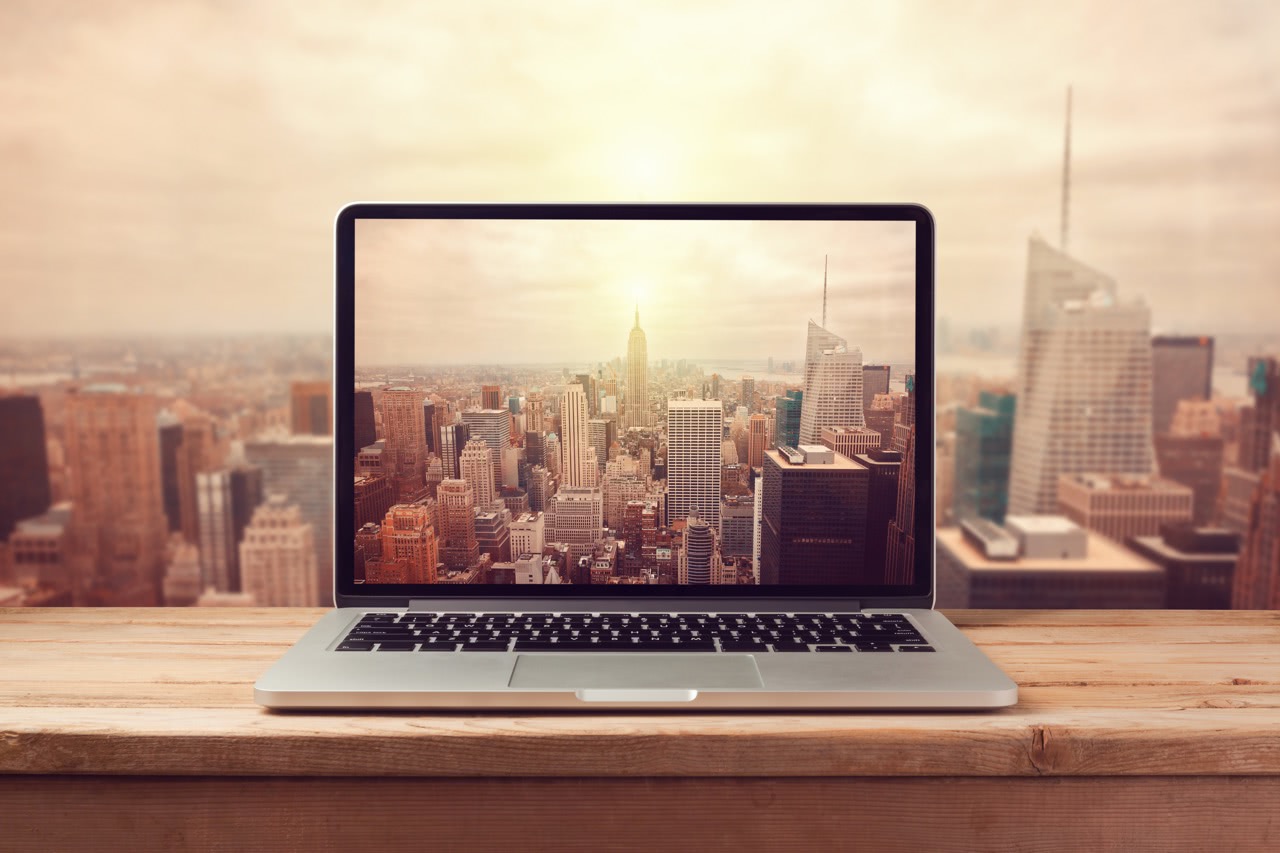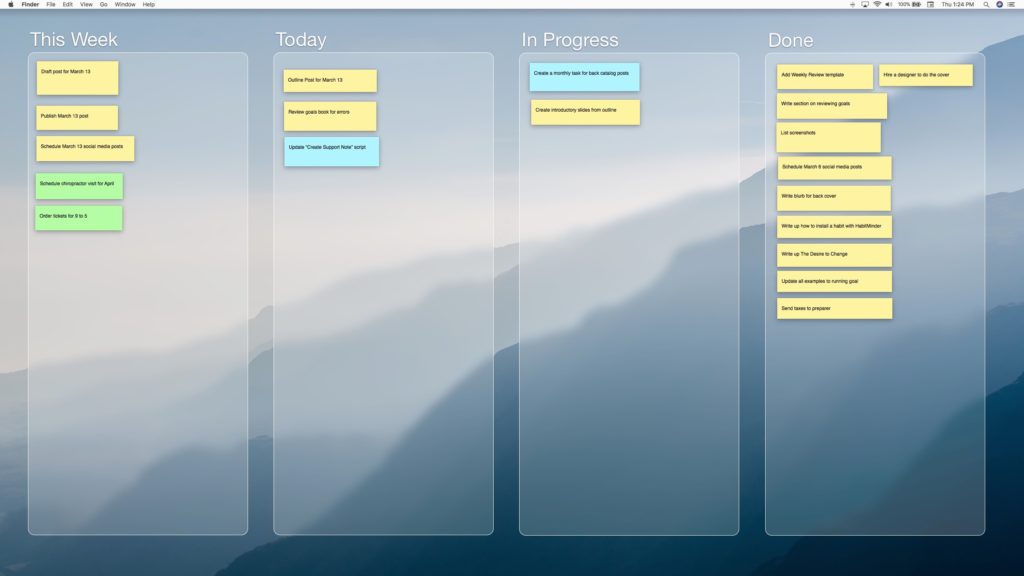Your computer’s desktop is always there, a constant backdrop for your digital productivity.
Like the top of your desk, your desktop is a space to work. You should keep it free of clutter so it doesn’t distract you while you work.
Once it’s clear, that presents you with an opportunity. At any time, you can show your desktop with a keystroke (see the Mission Control settings in System Preferences) or a gesture (Trackpad settings). Without a bunch of files in the way, you can hack your desktop into an ever-available productivity tool.
What can you overlay?
Here are five ideas for what you can overlay on your desktop:
-
Your calendar and task list for the day. Where you need to be and what you need to do are two lists that should be readily accessible, but not in your face. With GeekTool, Mindful or DateLine, and a little scripting, you can put your schedule on your desktop.
-
Kanban board. A kanban board is a visual representation of the status of tasks. Turn your desktop into a kanban board by overlaying the stages you need, either with GeekTool or an image editor (I used OmniGraffle). Then use the stickies app to track tasks. As you progress tasks, just move that sticky note to the right.
-
Mission statement and goals. Instead of (or in addition to) your daily schedule, why not zoom out a few levels and remind yourself of the direction you’re heading. Overlay your personal mission statement and active goals on your desktop background. In addition to text, you can overlay images to bring part of your vision board to your daily routine.
-
Progress Thermometer. Are you working on a goal with a numerically measurable progress, like getting out of debt? Create an image with a progress thermometer and keep it where you can regularly see it and be inspired by how far you’ve already come.
-
Multiple desktops for different kinds of work. In Deep Work, Cal Newport recommends setting up different places where you can focus on different tasks. When you go to a particular location, it sends a signal to your brain that it’s time to engage in that activity. You can do the same thing by using multiple desktops on your Mac. Put the apps for low- and high-value tasks in separate desktop spaces. Give your creative desktop a beautiful background picture that you will enjoy seeing. Give your administrative desktop an ugly background (try a solid red). This gives you a not-so-subtle cue that you should spend your time in one space, not the other.
How to Create an Overlay
There are two ways you can overlay content on your desktop: with a dynamic overlay that’s easily updated or a static overlay that you don’t need to fiddle with.
GeekTool is a utility that will let you overlay your desktop with static text, the output of a script, or an image. You can add, remove, or tweak your overlay elements at any time, or quit the app to get them out of the way. You’ll need to go this route if you want to overlay your task list, for example.
If you don’t need the dynamic updates that GeekTool lets you do, you can also create a desktop image that has the overlay baked in. You don’t want to go this route if you’re going to change your overlays with any degree of frequency, but you can get some beautiful results this way. For example, I’ll use OmniGraffle to create a background area with a blur, then put stickies or GeekTool output on top of it.
If you’re considering trying this out, pick whichever one looks easier to try.
Don’t overlay so much that you recreate the cluttered desktop you worked so hard to clear off! Our brains start shutting down from information overload when we see clutter. If you try having your desktop do too much, it won’t be able to help you out.
Question: How do you set up your desktop for productivity? Share your thoughts in the comments, on Twitter, LinkedIn, or Facebook.



